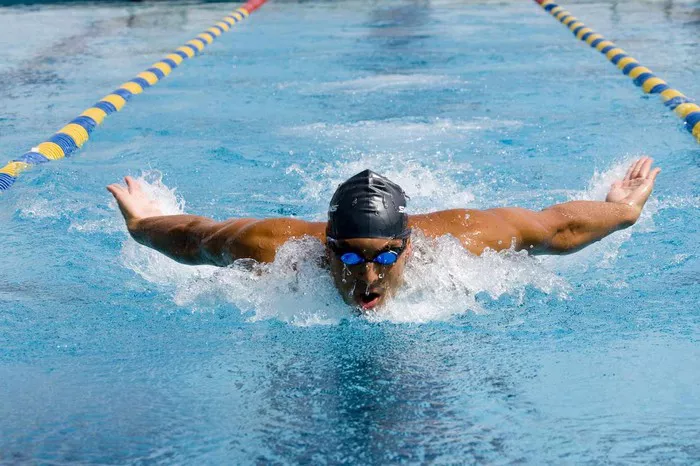Swimming is not just a recreational activity; it’s a skill that offers numerous physical and mental benefits. Whether you’re a novice swimmer looking to enhance your technique or an experienced swimmer striving for perfection, there are various strategies you can employ to elevate your swimming prowess. This comprehensive guide will delve into the intricacies of how to get better at swimming, covering fundamental techniques, training methodologies, and mental approaches to help you achieve your swimming goals.
Understanding the Basics
Before diving into advanced techniques, it’s crucial to master the foundational aspects of swimming. These include proper body positioning, breathing techniques, and stroke mechanics.
1. Body Positioning: Achieving the right body position is essential for efficient swimming. Your body should be streamlined with your head in a neutral position, looking straight down. Keep your body horizontal and close to the surface of the water to minimize drag.
2. Breathing Techniques: Proper breathing is key to sustaining your energy during a swim. Practice rhythmic breathing, inhaling quickly through your mouth when your face is out of the water and exhaling steadily when your face is submerged.
3. Stroke Mechanics: Each swimming stroke—freestyle, backstroke, breaststroke, and butterfly—has specific techniques to maximize efficiency. Focus on arm movements, leg kicks, and body rotation for each stroke, ensuring a smooth and coordinated motion.
Enhancing Technique through Drills
Refining your swimming technique requires consistent practice of specific drills tailored to improve various aspects of your stroke mechanics. Incorporate these drills into your training regimen:
1. Kickboard Drills: Use a kickboard to isolate your leg movements and improve your kicking technique. Practice flutter kicks and dolphin kicks to strengthen your leg muscles and enhance propulsion.
2. Pull Buoy Drills: Utilize a pull buoy between your legs to isolate arm movements. This drill helps improve your arm strokes and upper body strength.
3. Fingertip Drag: Swim freestyle while dragging your fingertips lightly along the water’s surface during recovery. This drill promotes a high elbow position, enhancing stroke efficiency.
4. Breathing Drills: Perform drills focusing solely on breathing technique, such as bilateral breathing (breathing on both sides) or 3-3-3 breathing (breathing every 3 strokes).
Structured Training Regimen
Consistency and structure are vital components of improving swimming proficiency. Design a training plan that encompasses the following elements:
1. Swim Frequency: Aim for regular swimming sessions, gradually increasing your weekly swim volume.
2. Varied Workouts: Incorporate a mix of endurance, speed, and technique-focused workouts to enhance overall swimming ability.
3. Interval Training: Integrate interval training to improve cardiovascular fitness and race pace. Alternate between high-intensity swimming and rest periods.
4. Cross-Training: Supplement your swimming with activities like strength training and flexibility exercises to prevent injuries and enhance performance.
Mental Preparation and Focus
Swimming is as much a mental challenge as it is physical. Adopt these strategies to enhance your mental resilience and focus:
1. Visualization: Before a swim, visualize yourself executing perfect strokes and achieving your goals. Mental imagery can enhance performance and confidence.
2. Goal Setting: Establish both short-term and long-term swimming goals. Break down larger goals into manageable milestones to track progress effectively.
3. Positive Affirmations: Cultivate a positive mindset by using affirmations during training and competition. Replace negative thoughts with empowering statements to boost confidence.
4. Focus on Technique: During practice, concentrate on refining specific aspects of your technique. Pay attention to details and seek feedback from coaches or experienced swimmers.
Utilizing Feedback and Coaching
Seeking feedback from experienced coaches or swimmers is invaluable for improving swimming skills. Consider these approaches:
1. Video Analysis: Record your swimming sessions and review the footage to identify areas for improvement in your technique.
2. Coaching Sessions: Enroll in swim clinics or workshops led by qualified coaches to receive personalized guidance and feedback.
3. Peer Learning: Swim alongside proficient swimmers and observe their techniques. Emulate successful strategies and learn from their expertise.
Rest and Recovery
Finally, prioritize rest and recovery to optimize performance and prevent burnout or overuse injuries. Incorporate these recovery strategies into your routine:
1. Sleep: Ensure adequate sleep to support muscle repair and overall recovery.
2. Nutrition: Maintain a balanced diet rich in carbohydrates, proteins, and healthy fats to fuel your swimming workouts and aid in recovery.
3. Active Recovery: Engage in light activities like stretching, yoga, or leisure swimming on rest days to promote blood flow and alleviate muscle soreness.
Conclusion
In conclusion, improving your swimming skills requires dedication, patience, and a systematic approach. By focusing on fundamental techniques, implementing structured training plans, nurturing mental resilience, seeking feedback, and prioritizing recovery, you can unlock your full potential as a swimmer. Consistent practice and a growth-oriented mindset will pave the way for continuous improvement and success in the water.

